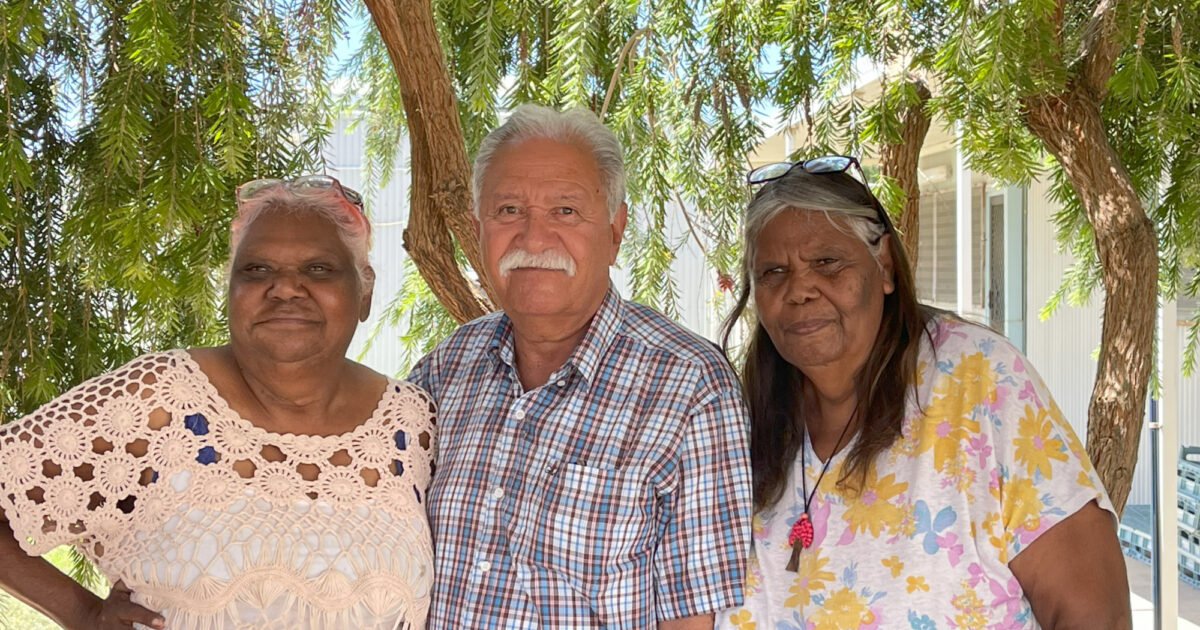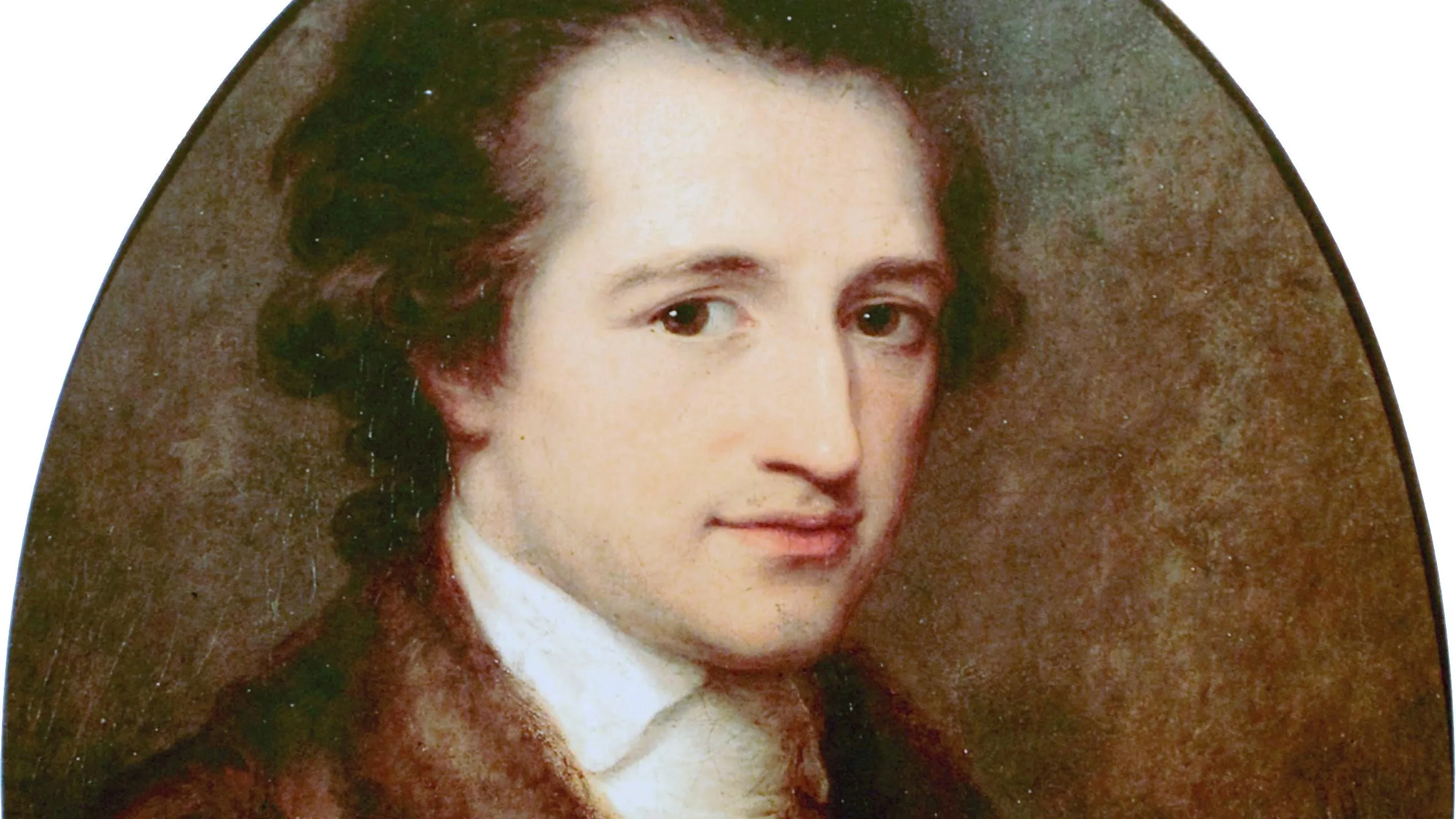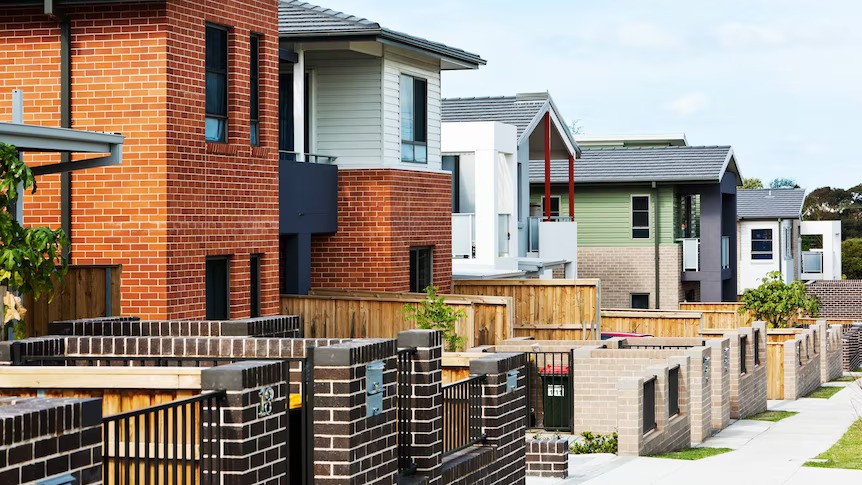Culture
Wearable Tech Detects Atrial Fibrillation: Aboriginal Health Initiative Takes Center Stage

When Aunty Mary Waites joined a research trial aimed at helping to reduce the risk of stroke and cardiovascular disease in Aboriginal and Torres Strait people, she saved her husband’s life.
When Aunty Mary, a Ngemba woman from Brewarrina in western NSW, had her blood pressure checked by the local Aboriginal Medical Service, as part of the study, it prompted her husband Lindsay to do the same.
Mr Waites had an abnormal reading and went to Dubbo hospital for more tests, which found two and a half blocked arteries.
He had surgery at Sydney’s Royal Prince Alfred Hospital, where doctors found another one and a half-blocked arteries.
“Lindsay had no symptoms or pain, the only reason we found out about this was because he had a simple 30-second check done,” Aunty Mary told AAP.
“I would encourage all our people to get tested – it’s just a few seconds that could save your life.”
Aboriginal health experts at the Heart Research Institute are sounding the alarm on atrial fibrillation (AF), a leading cause of stroke, amid the pilot study which encourages people to take a greater role in their healthcare.
Bundjalung elder Boe Rambaldini, Associate Professor with the Djurali Centre for Aboriginal and Torres Strait Islander Health Research, said Aboriginal people are more likely to suffer cardiac problems like heart disease and stroke, due to the prevalence of AF or an irregular heartbeat, with too many people falling through the cracks in the mainstream health system.
“Aboriginal people experience higher levels of AF at an earlier age than the general population, and research shows we are also experiencing catastrophic strokes at a much younger age,” he said.
“We want to close the gap when it comes to healthcare, and we can do this by helping Aboriginal people be more actively involved in their own health.
“Checking for AF is one simple way.”
Prof Rambaldini said the ultimate goal is for every Aboriginal person to be checked for AF every time they go to a health clinic.
“It’s a pulse test that takes 30 seconds, it should be part of routine care,” he said.
“Life-saving screening is available for people over 65, but that’s often too late for Aboriginal people, who need to be screened from age 55 years.”
The Djurali Centre officially joined the Heart Research Institute in December and is piloting wearable technology for AF detection.
Djurali research director Assoc Prof Kylie Gwynne said they had developed a culturally-safe protocol for screening in primary health care settings and are using smart watches.
“Digital technology is changing how we care for our health, and it has the potential to provide cost-effective services for under-served populations,” she said.
Half a million Australians unknowingly have AF and that number is projected to increase by 150 per cent over the next four decades – potentially leading to a sharp increase in stroke and heart failure.
In people with AF, blood circulates in the heart in an abnormal way, so there is a tendency for clots to develop.
If a clot blocks the brain artery, it can cause a stroke.
AF-related strokes tend to be larger, more severe, and harder to survive than strokes due to other causes.
“The watches in this pilot study are another tool really to engage patients in finding what their AF status is, and engaging their health professionals in that,” Prof Rambaldini said.
“This study is all about finding problems as early as possible and facilitating access to the best available treatment to try and close the gap in life expectancy and quality of life for Aboriginal people.
“AF occurs more commonly in Aboriginal people at an earlier age, and when AF is found earlier, the risk of stroke is much higher than for non-Aboriginal people.”
The risk of AF is increased by heart disease, high blood pressure, type two diabetes and sleep apnoea, as well as the use of stimulants like tobacco smoking.

Community
How the Beatles Won Australia Over Minus the Razzmatazz

Here’s a look back at how the Beatles captured the hearts of Australian fans during their 1964 tour, without the extravagant stage effects that are common in today’s concerts.
Teenager Sandi Keane vividly remembers the excitement of seeing the Fab Four at Melbourne’s Southern Cross Hotel. The Beatles, in the midst of Beatlemania, were greeted by hundreds of thousands of screaming fans lining the streets from Essendon Airport to the city center.
Despite the overwhelming crowds, the Beatles were thrilled by the reception. They engaged with the fans, with drummer Ringo Starr even joking about his daring entrance into the hotel.
At the Festival Hall concerts a few days later, super fans like Ms. Keane were immersed in the Beatles’ music and energy. The band, representing a new generation of change, played a key role in the cultural shift of the 60s.
While their performance may seem simple by today’s standards, with just their voices and instruments, the impact of the Beatles’ music was undeniable. Songs like “She Loves You” resonated with fans like Ms. Keane, creating a joyous and unforgettable experience.
Now, 60 years later, the Beatles’ Australasian tour is celebrated as a defining moment of Beatlemania. A new book, “When We Was Fab: Inside the Beatles Australasian Tour 1964,” compiled by Greg Armstrong and Andy Neill, captures the essence of that historic moment.
Reflecting on the Beatles’ personalities, Ms. Keane describes Paul McCartney as having a “honey on toast-type voice,” John Lennon’s raspy tones, Ringo Starr’s shyness, and George Harrison’s reserved nature. Despite their fame, the Beatles remained true to themselves.
The Beatles’ ability to captivate audiences with just their music and presence, without the need for elaborate stage effects, is what makes them timeless. Their performance, filled with raw talent and genuine connection, continues to resonate with fans today.
As the Beatles left a lasting impact on Australia during their 1964 tour, their legacy lives on through their music and the memories of fans like Sandi Keane, who experienced the magic of Beatlemania firsthand.
The Beatles’ influence on music and pop culture is undeniable, with their simple yet powerful performances showcasing the true essence of their talent. Despite the passage of time, the Beatles’ music continues to inspire and captivate audiences around the world, proving that sometimes, all you need are four boys in suits and ties to win over a nation.
Culture
Ken and Werther: A Tale of Obsessive Passion from Goethe to Barbie

Before dejected Ken, there was dejected Napoleon, and dejected Werther…
2024 marks the 250th anniversary of one of the most curious novels in literary history. In 1774, at the age of 24, the future author of “Faust,” Johann Wolfgang von Goethe (1749-1832), created his consequential “The Sorrows of Young Werther” (Die Leiden des jungen Werthers). Equally mocked and imitated, it was the novel that, along with Lord Byron’s “Childe Harold,” inspired countless brooding literary heroes, filled with pride, suffering from dejection, and yearning for the illusive and tragically unrealizable ideal. Napoleon took “Werther” on his Egyptian Campaign and read it over and over again while pining for Josephine.
The tradition of pining for lady love flaunts a venerable literary history − from the lusty tantrums of Achilles on that consequential beach by the walls of ancient Troy to the transcendent yearning of Dante for his Beatrice and Quixote’s flamboyant chivalry with the earthy Dulcinea.
But Werther’s self-indulgent possessiveness is different, modern, and insistent on calling attention to itself. Emerging out of the Age of Enlightenment that produced the Encyclopédie (1751-1772), a 17-volume standardized compilation of Western knowledge, “The Sorrows of Young Werther” defies this rationalizing effort and places the suffering of an individual above the normative culture striving towards universal progress.
The archetypal echoes of Werther’s obsessive passion for one unattainable woman inspired 19th and 20th-century imitations and found its way into contemporary pop culture − immediately recognizable in Ken’s drive to make himself noticed, singled out, and loved by the only woman who brings meaning to his life, Barbie (to be discussed further in my University of Iowa “Barbie” course this fall!). Enacted against the backdrop of a consumerist paradise that constitutes the new standardized Western ideal, Ken’s yearning for the fulfillment of his singular and possessive emotion is deeply evocative of the sentiments expressed by a 24-year-old emerging genius 250 years ago.
In 1808, on the sidelines of the Congress of Erfurt, Napoleon, now emperor and ruler of the vast majority of continental Europe, summoned Goethe, 20 years his senior, for an audience. Napoleon confessed his fondness for “Werther” and inquired why Goethe’s depiction of certain aspects of the narrative deviated so dramatically from lived experiences. Goethe claimed artistic license – and noted in his diary that Napoleon’s knowledge of Werther was deep and showed introspection. What prompted Napoleon to become such a close reader of Werther? Josephine!
Josephine was an event in Napoleon’s life – he was an episode in hers. Six years his senior, a widow whose aristocratic husband was guillotined during the Reign of Terror, Josephine picked up the shattered pieces of her life the best she could. During the Directory, she courted the love and patronage of men who were steering the First French Republic through the choppy waters of the First Coalition War. Through these men she met Napoleon, young, scrappy, and hungry, a newly minted general at 24, ready to take the world by storm. Needless to say, he was smitten! Worldly and intriguing, she was the epitome of the sophistication and elegance the young and artless Corsican admired and craved. His ardent letters to Josephine were filled with intimate details and fantasies that would not have been alien to Werther’s inflamed imagination. And yet when Napoleon departed for his First Italian Campaign, Josephine took a lover, a dashing Hussar lieutenant, and Napoleon’s passionate letters went unanswered:
Forgive me, love of my life, my heart is racked by conflicting forces. Obsessed by you, my heart is full of fears which make me unhappy… I am distressed not to be calling you by name. I shall wait for you to write it. Farewell! Ah! if you love me less you can never have loved me. In that case, I shall truly be pitiable.”
These lines could be easily mistaken for a draft of one of Werther’s outpourings to his beloved Lotte. In the final years of the tumultuous 18th century, Napoleon found solace for his frustrated military and political ambitions and unfulfilled love for Josephine in the receptive volume of Werther’s sufferings.
For his service to literature, Napoleon awarded Goethe the Legion of Honor, which Goethe displayed with pride, calling Napoleon “my emperor.” And Josephine? She and Napoleon drifted apart; he took many mistresses over the years of his subsequent military triumphs – yet he crowned Josephine his empress in 1804. Their eventual divorce and Napoleon’s second marriage were prompted by the need for succession − Josephine could not give him the heir he desired. Still, on the windswept island of Saint Helena, on his deathbed, Napoleon’s last word was Josephine’s name. Goethe’s Werther – and Ken – would approve.
For a guided reading of The Sorrows of Young Werther, check out Anna’s Substack posts at: https://annasthinkingcap.substack.com/p/annas-thinking-cap-reading-marathon-f8e
Anna Barker is an adjunct assistant professor at the University of Iowa. She received her Ph. D. in Comparative Literature in 2002 with a dissertation in translation studies. She has taught University of Iowa courses in the English Department, in Comparative Literature, in Russian Literature, and in the Honors Program.
Culture
COVID’s Lesson: Urbanisation and Tax Spark Housing Crisis

This article is the first in The Conversation’s series examining the housing crisis. Read the other articles in the series here.
The paradox of Australian housing is the abundance of land – 7.5 million square kilometres of it – and the shortage of accommodation.
The pandemic lockdowns and the changes that flowed from them have disrupted the paradox and will take some time to settle down.
By 1911, most of today’s towns were already established. Regional Australia was then home to 60% of the population.
Since then small towns have died, and regional centres have grown, much of the population has moved to the coast and cities for work, and new towns have grown to support mining in the north and west and farming in irrigation areas.
Only 7% of the population lives outside capital cities.
While the first census in 2011 recorded 24% of the workforce was employed in agriculture, forestry or fishing, the most recent survey recorded less than 3%.
Cities made housing expensive
Packing Australia’s population into capital cities helped push up land prices because the supply of well-located land in cities was limited.
The resultant housing stress is worse than the official figures suggest.
The Bureau of Statistics defines housing stress as occurring when a lower-income household spends more than 30% of its gross household income on housing costs.
But as homebuyers have moved further away from city centres to avoid high housing costs, they’ve been hit with higher commuting costs, boosting the number who are in financial stress because of housing.
A study I conducted with University of Canberra colleagues in the mid-2000s found that when commuting costs were included in housing costs the proportion of home owning couples with children in housing stress jumped from 15% to 19%.
Housing became an ‘investment’
Rising prices have made buying an extra home a “safe investment” for existing homeowners – all the more so when accompanied by generous tax concessions..
The more homeowners bought second (and even third) properties, the more price pressure they added to prices which made lightly-taxed capital gains on investment properties seem an even safer bet.
The latest tax figures show 2.2 million Australians owning investment properties, up from 1.2 million two decades earlier. This means that at a time when Australia’s population grew 32%, the number of Australians owning investment properties grew 83%.
The more homeowners make investment decisions on the assumption that prices will keep rising, the more resistant they become to measures that wind those price rises back.
Among those measures are relaxed planning rules that would increase the supply of competing properties, and changes to tax rules that would make investing less attractive.
Modelling published in Australian Economic Papers finds that if Labor’s 2019 program had been adopted, the share of households who own their home rather than rent would have climbed 4.7 percentage points.
For most households that would have been able to buy but now have to rent, renting is an inferior substitute.
But for landlords the displaced would-be owners are useful. They become tenants, helping the investment make sense
Then came COVID
The pandemic lockdowns prompted a rethink of how and where Australians lived.
Home offices became more attractive and group houses became less attractive pushing down the average number of residents per home and pushing up the demand for homes even before borders reopened.
But many Australians discovered they didn’t need to live as close to their work and moved further away to more distant suburbs, and away from cities altogether to regional locations where housing was more affordable.
While this improved their quality of life by cutting housing and commuting costs, it overwhelmed the supply of houses in those regions and pushed up prices.
In time more homes will be built in those regions to accommodate more of them, unless there’s a return to the office.
The changes wrought by COVID will provide challenges and lessons for planning, especially planning for housing and infrastructure away from Australia’s cities.
Their enduring legacy is likely to be a demand for more housing per Australian, which will take some time to meet.
But even then, the dynamics of cities and tax concessions for householders who own more than one home are likely to conspire to keep pushing prices higher.
Author
Associate Professor, Faculty of Business, Government and Law, University of Canberra
This article was first published in the Conversation.
-
Business2 years ago
How to Earn Money Writing Blog Posts in 2023: A Comprehensive Guide
-
Games2 years ago
How does Dead Space Remake enhance the Horror Classic of 2008
-
Video2 years ago
Everything you need to know about Starfield
-
Health2 years ago
How is Yoga and Pilates Bridging the Gap Between your Mind and Body
-
Health2 years ago
Migraine medications significantly improve the quality of life
-
World2 years ago
Swiss Pharma Powerhouse Acino Expands into Latin America with M8 Pharmaceuticals Acquisition
-
Self Improvement2 years ago
Enhancing Relationships and Emotional Intelligence Through Mindfulness Meditation
-
Health2 years ago
Fortrea Unveils Expanded FortreaRx™ Pharmacy, Elevating Patient Access Solutions























